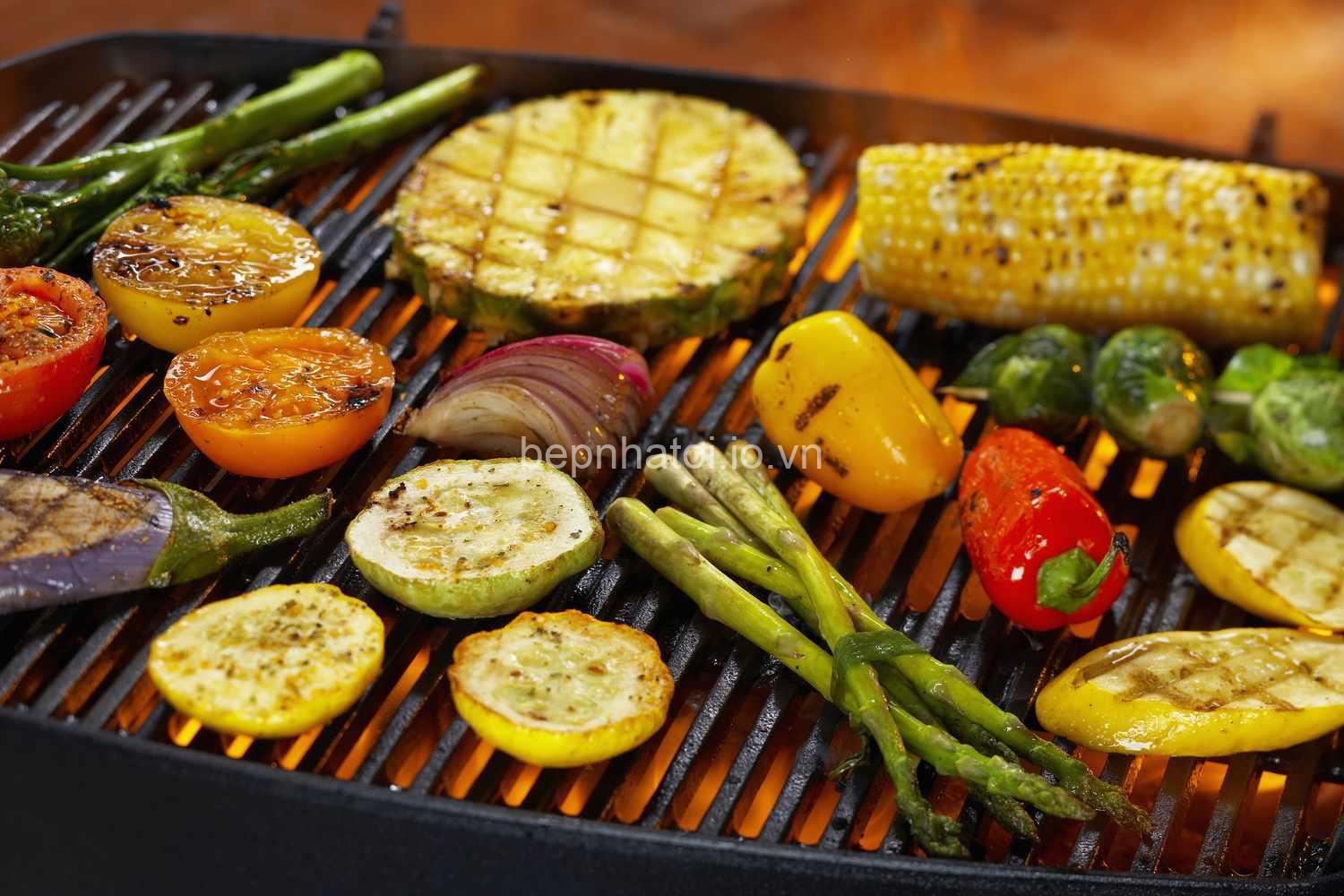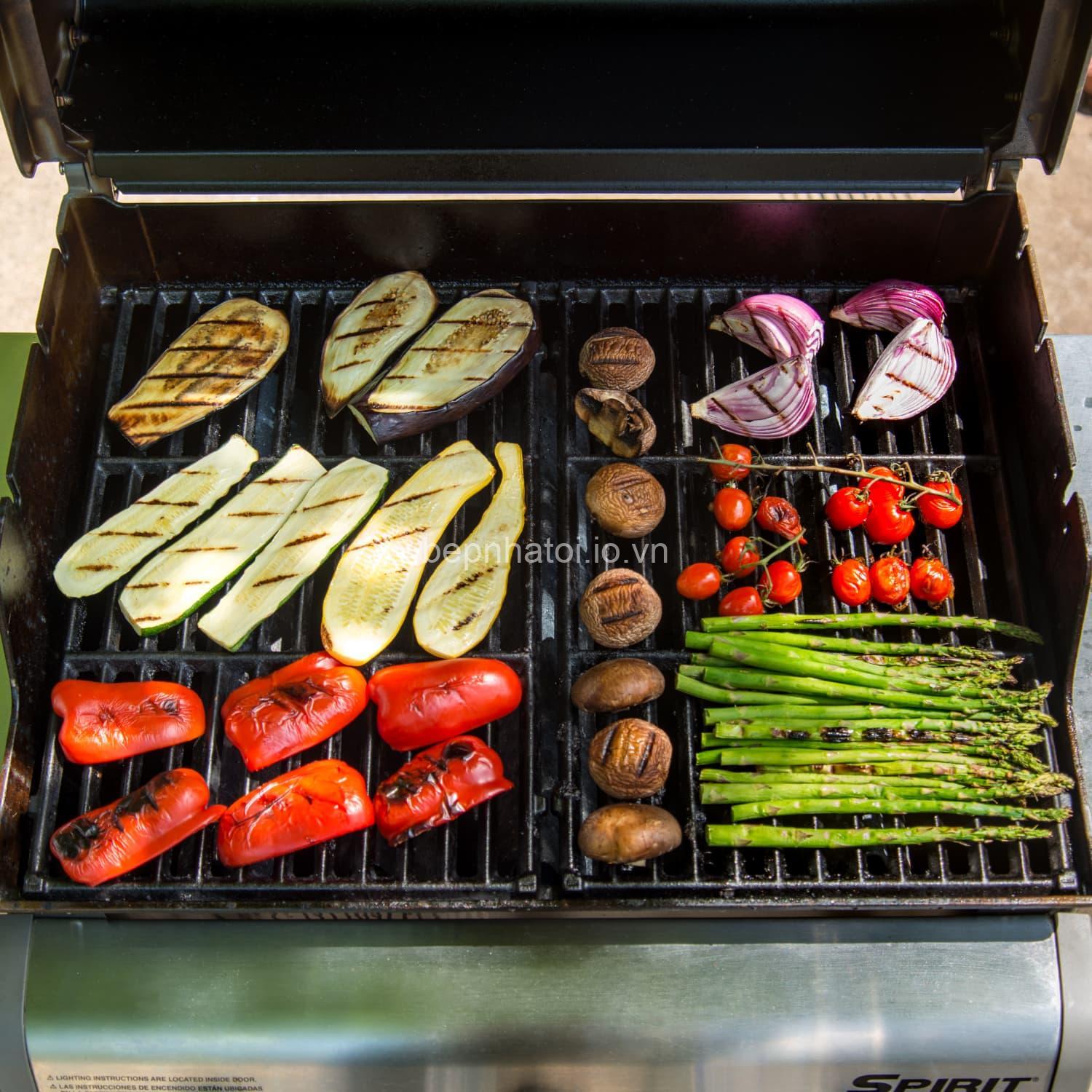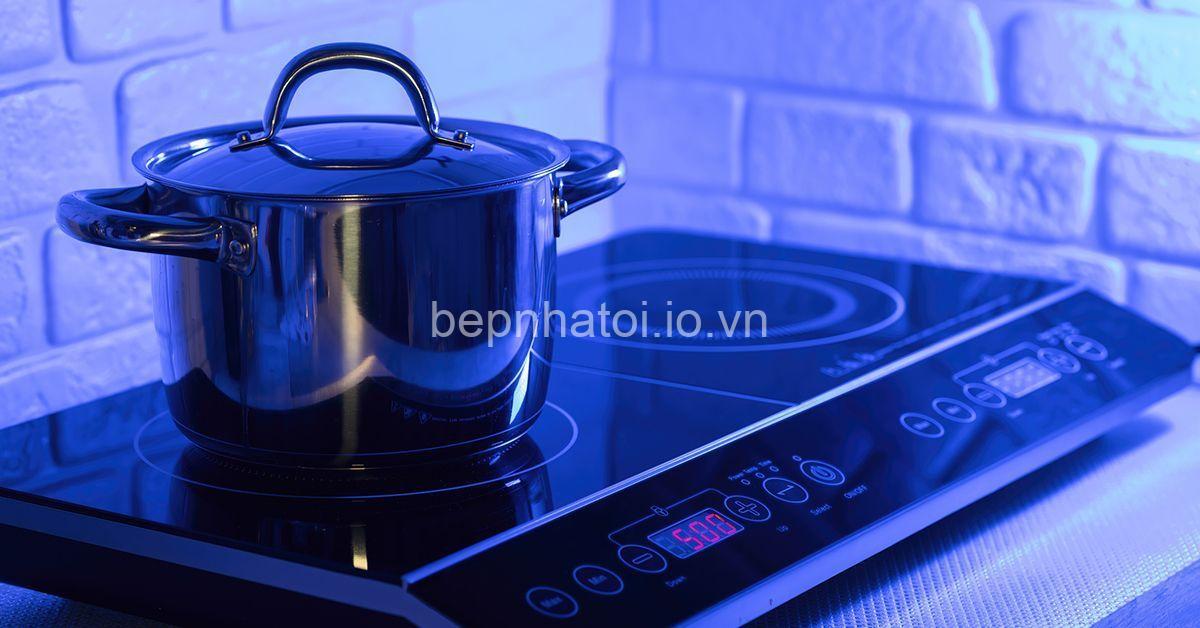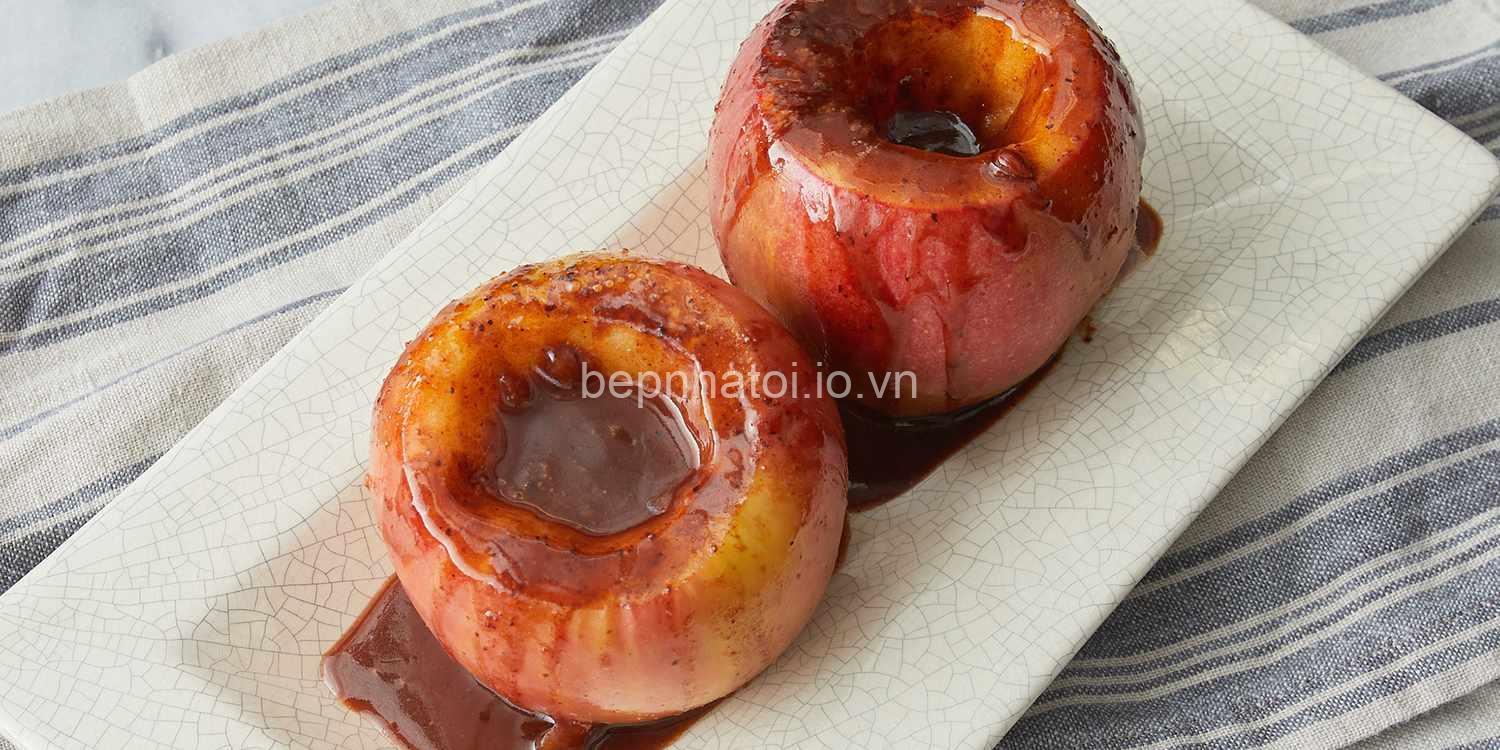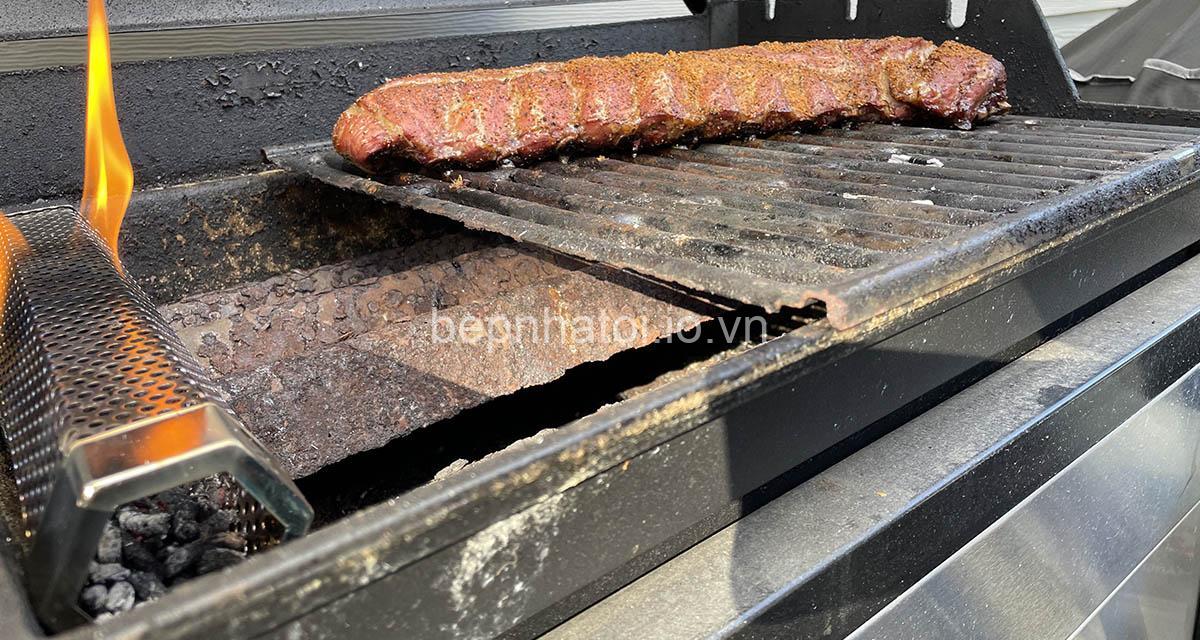
Smoke Meat on a Gas Grill: A Beginner’s Guide to Delicious BBQ. In today’s article, bepnhatoi.io.vn will explore with you in the most detailed and complete way. See now!
Setting Up Your Gas Grill for Smoking
You might be surprised to learn that you can achieve amazing smoky flavors using your everyday gas grill. It’s all about understanding the basics of indirect heat and using the right equipment.
Understanding the Basics
To smoke meat on a gas grill, you need to create an environment where the heat is not directly hitting the meat. Instead, the meat should be exposed to the heat radiating from the sides, creating a gentle, even cooking process that allows the smoke to penetrate the meat for maximum flavor. Think of it like building a little smokehouse within your grill.
Essential Equipment
Before you start, make sure you have the right equipment for smoking on a gas grill.
- Gas Grill: Choose a grill with a good size, ideally with multiple burners for temperature control. A good-sized grill gives you enough space for indirect cooking and room to maneuver.
- Smoking Box: A smoking box is a small container that holds wood chips, allowing them to release smoke as they smolder. Metal smoking boxes are readily available and affordable, while ceramic boxes offer better heat retention and smoke production. Choose a size that fits comfortably within your grill and holds enough wood chips for your smoking session.
- Wood Chips: The type of wood you use significantly impacts the flavor of your smoked meat. Hickory, mesquite, and fruitwoods like apple and cherry are popular choices. Hickory offers a bold, smoky flavor, mesquite provides a more robust, slightly sweet taste, and fruitwoods impart a milder, sweeter flavor. Experiment with different types to find your favorites.
Setting Up the Grill
Now, let’s set up your grill for smoking:
- Preheating the Grill: Preheat your gas grill to 225-250°F (107-121°C) for even cooking and to create a steady smoke. This is crucial for achieving a delicious, tender result.
- Creating a Smoke Chamber: Place your wood chips in the smoking box and position it on the grill grate. The smoking box should be placed on one side of the grill to create a smoke chamber.
- Positioning the Meat: Place your chosen meat on the other side of the grill, away from the direct heat of the burners. This is where indirect heat comes into play. The meat should be exposed to the heat radiating from the sides, allowing the smoke to penetrate the meat for maximum flavor.

Choosing and Preparing the Meat
Now that your grill is ready, it’s time to choose and prepare the perfect cut of meat for smoking.
Selecting the Right Cut
Not all cuts of meat are created equal for smoking. You want to choose a cut that is rich in marbling, has a good amount of fat content, and is suited for low and slow cooking.
- Beef: Brisket, ribs, and chuck roast are classic choices for beef smoking. These cuts contain a good amount of marbling, which breaks down during the long cooking process, resulting in tender, flavorful meat.
- Pork: Pork shoulder, ribs, and even pork loin are excellent choices for smoking. Pork shoulder, also known as Boston butt, is particularly popular due to its rich flavor and ability to withstand long cooking times.
- Chicken: Chicken thighs and whole chickens are great options for smoking. The darker meat of the thighs retains moisture better during long cooking, resulting in succulent chicken.
- Other Meats: You can also smoke lamb, fish, and even vegetables!
Prepping the Meat for Smoking
Once you’ve chosen your cut, it’s time to prepare it for smoking:
- Trimming Excess Fat: Trim any excess fat to ensure even cooking. You want to leave enough fat on the meat to keep it juicy and flavorful, but excessive fat can hinder even heat distribution.
- Applying a Dry Rub or Brine: A dry rub is a combination of spices and seasonings that is rubbed onto the meat before smoking. This adds flavor and helps create a crispy, flavorful outer crust. A brine is a salt and water solution that is used to soak the meat before smoking, helping to keep it moist and tender. Experiment with different dry rubs and brines to find your favorites.
- Meat Injector (Optional): A meat injector can be used to introduce additional flavors and moisture to the meat. Use it to inject a marinade, broth, or even a flavorful sauce into the meat before smoking.
The Smoking Process: Maintaining Temperature and Smoke
The key to successful smoking is maintaining a consistent temperature and producing enough smoke to infuse the meat with flavor.
Maintaining Consistent Temperature
- Adjusting Burner Settings: You’ll need to adjust the burner settings on your gas grill to maintain a steady temperature of 225-250°F (107-121°C). This is the ideal temperature range for slow smoking.
- Monitoring the Temperature: Use a reliable meat thermometer to check the internal temperature of the meat throughout the smoking process. You’ll need to adjust burner settings as needed to maintain this temperature.
Adding Wood Chips for Smoke
- Adding Wood Chips: You’ll need to add wood chips to the smoking box periodically throughout the smoking process to keep the smoke going. The frequency of adding chips depends on the type of wood and the size of your smoking box.
- Avoiding Overloading: Don’t overload the smoking box with wood chips, as this can create too much smoke, potentially smothering the meat. Experiment with different amounts of chips to find the perfect balance for your grill.
Achieving the Perfect Smoke Ring
One of the hallmarks of delicious smoked meat is the smoke ring, that beautiful reddish-pink band that forms just beneath the surface of the meat. It’s not just a visual treat; it’s also a testament to proper smoking techniques.
Understanding the Smoke Ring
The smoke ring is created through a chemical reaction between the smoke and the meat. The smoke contains nitric oxide, which reacts with the myoglobin in the meat to create a layer of pink color just beneath the surface.
Tips for Enhancing the Smoke Ring
- Maintaining a Consistent Low Temperature: The smoke ring develops best at a low temperature, around 225-250°F (107-121°C).
- Using the Right Wood Chips: Choose wood chips that produce a lot of smoke, like hickory or mesquite.
- Ensuring the Meat is Close Enough to the Smoke Source: Place the meat close enough to the smoking box so that it’s exposed to the smoke, but not so close that it gets directly exposed to the heat from the burners.
Monitoring and Reaching Doneness
As your meat smokes, you need to keep an eye on its internal temperature and look for visual cues indicating it’s reaching doneness.
Internal Temperature as a Guide
- Meat Thermometer: Use a meat thermometer to check the internal temperature of the meat throughout the smoking process.
- Safe Internal Temperatures: Use a meat thermometer to check the internal temperature of the meat throughout the smoking process. Here are some safe internal temperatures for different types of meat:
- Beef: 145°F (63°C) for medium-rare, 160°F (71°C) for medium.
- Pork: 145°F (63°C).
- Chicken: 165°F (74°C).
Visual Cues for Doneness
- Color Changes: As the meat cooks, it will change color. Look for the desired level of doneness.
- Shrinkage: The meat will also shrink as it cooks.
- Tenderness: Use the “poke test” to check for tenderness. Gently press the meat with a fork. If it feels springy and offers resistance, it needs more cooking time. If it gives way easily, it’s likely done.
Resting and Serving Your Smoked Meat
Once the meat has reached the desired internal temperature, it’s crucial to let it rest before carving and serving.
The Importance of Resting
- Temperature Equalization: Allowing the meat to rest allows the internal temperature to equalize throughout the entire piece. This results in a more tender and juicy product.
- Juiciness: Resting allows the juices to redistribute throughout the meat, preventing them from running out when you slice it.
Serving Suggestions
- Complementary Sides: Serve your smoked meat with classic BBQ sides like coleslaw, baked beans, potato salad, and mac and cheese.
- Sauces: Experiment with different BBQ sauces, from sweet and tangy to smoky and spicy.
- Presentation: Use a cutting board or platter to present your smoked meat beautifully.
Troubleshooting Common Problems
Even experienced pitmasters encounter challenges. Here are some common problems and solutions you can try:
Uneven Cooking
- Cause: Incorrect temperature or improper grill setup.
- Solution: Adjust burner settings to maintain a consistent temperature. Ensure the meat is positioned correctly, away from direct heat.
Inconsistent Smoke
- Cause: Issues with wood chip usage or grill setup.
- Solution: Ensure the smoking box is properly placed, with enough space for airflow. Add wood chips regularly to maintain a consistent smoke.
Dry Meat
- Cause: Overcooking, lack of moisture, insufficient fat content.
- Solution: Use a meat thermometer to monitor the internal temperature carefully. Ensure the meat has enough fat, and consider using a brine or marinade to add moisture.
Other Issues
- Meat is too smoky: Reduce the amount of wood chips or the time spent smoking.
- Meat is not smoky enough: Increase the amount of wood chips or the time spent smoking.
- The grill is not hot enough: Adjust the burner settings to reach and maintain the desired temperature.
Tips for Success and Flavor Enhancement
Here are some tips to maximize your smoking success and unleash your creativity:
Best Practices for Gas Grill Smoking
- Patience: Smoking meat is a slow process. Be patient and don’t rush the cooking time.
- Attention to Detail: Pay close attention to the temperature and smoke production. Make small adjustments as needed.
- Experimentation: Don’t be afraid to experiment with different cuts of meat, wood chips, rubs, and sauces. Discover your signature smoking style.
Experimenting with Flavors
- Wood Chip Combinations: Try blending different wood chips to create unique flavor profiles. For example, combine hickory and apple for a sweet and smoky flavor.
- Rubs and Marinades: Experiment with different dry rubs and marinades to add complexity and depth to your smoked meat.
Safety Tips and Food Handling
- Proper Temperature: Ensure the meat reaches the safe internal temperature for the specific cut.
- Cleanliness: Wash your hands and all utensils thoroughly before and after handling raw meat.
- Storage: Refrigerate smoked meat properly after cooking to prevent spoilage.
Resources and Further Information
For more information on smoking meat, check out these resources:
- Websites:
- Online Communities: Join online BBQ forums for tips, advice, and inspiration.
Conclusion
Smoking meat on a gas grill can be a rewarding experience. With a little patience and practice, you can create delicious, smoky flavors that will impress your family and friends. Don’t be afraid to experiment, try new recipes, and share your smoking adventures with the community.
Head over to bepnhatoi.io.vn for more tips and tricks for animal care and delicious recipes. Leave a comment and let us know your favorite smoking tips.
Susan Grace Rodriguez, owner of bepnhatoi.io.vn, is an animal lover and passionate about sharing knowledge about animals and their care.
FAQs
What is the best wood chip for smoking meat on a gas grill?
The best wood chip for smoking meat depends on your personal preference. Hickory, mesquite, and fruitwoods like apple and cherry are popular choices, each imparting different flavors. Hickory offers a bold, smoky flavor, mesquite provides a more robust, slightly sweet taste, and fruitwoods impart a milder, sweeter flavor.
How do I know if my meat is cooked to the right temperature?
Use a meat thermometer to check the internal temperature of the meat. Different types of meat have different safe internal temperatures. Check a reliable chart for the correct temperature for the type of meat you’re smoking.
How long should I smoke meat on a gas grill?
The smoking time depends on the cut of meat and the desired level of doneness. Consult a reliable recipe or chart for estimated smoking times for different meats. Remember, smoking is a slow process, and it’s best to err on the side of caution and cook for longer rather than risk undercooking.
How do I maintain a consistent temperature while smoking?
Adjust the burner settings on your gas grill to reach and maintain a steady temperature of 225-250°F (107-121°C). Use a meat thermometer to monitor the internal temperature of the meat throughout the smoking process, and make adjustments to the burner settings as needed.
What should I do if my meat is dry?
If your meat is dry, consider using a brine or marinade to add moisture before smoking. You can also adjust the cooking time and temperature to ensure the meat cooks evenly without drying out.
